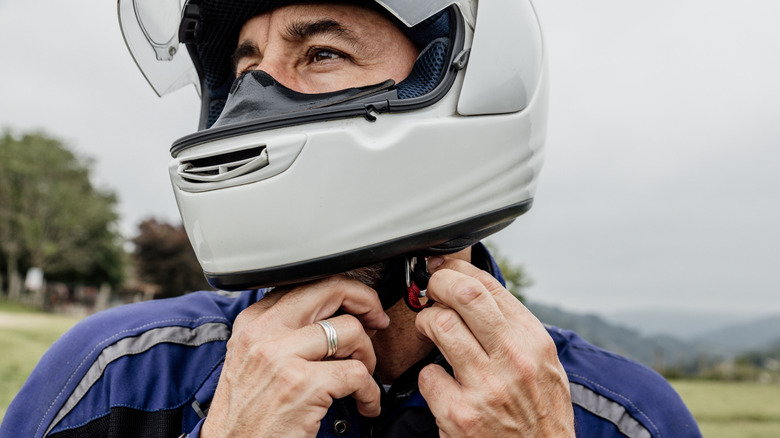What Is A MIPS Motorcycle Helmet & How Does It Work?
A helmet is one of the most important things you can take while going on a ride. However, knowing which brands to pick can be overwhelming, given how many there are today. For example, helmets from Arai and Bell are considered among the best helmets in NHTSA compliance, while others, like those from HJC, do not seem to punch beyond the minimum safety requirements. There are essential things to look out for when buying a motorcycle helmet, from safety certifications and comfort to ventilation and fit. Many have been flocking to Mips helmets lately, given the gear's performance. But what exactly are they, and how do they work?
Mips stands for Multi-directional Impact Protection System, a phrase that somewhat explains what these helmets are capable of. Mips helmets are headgear with a low-friction lining that helps redirect rotational force to the head upon an angled impact, therefore reducing the risk of a brain injury. In simple terms, these helmets offer the best protection against head and brain damage in the event of an accident.
It is all in the lining
The low-friction layer in Mips helmets is the star of the show. The lining allows for a 10–15-millimeter multidirectional movement during impact, reducing the force that would have impacted the rider's head. The lining is installed between the helmet's EPS anti-impact layer and padding, adding a negligible 25 – 45 grams to the gear's overall weight.
The human brain is suspended in cerebrospinal fluid, which ensures it doesn't suffer much damage under sudden acceleration and deceleration. In the event of an impact on the head, the rotational forces that would have resulted in brain damage were the brain directly fused to the skull are lessened. Mips technology applies this concept to its products, allowing the head to move within the helmet as the suspended brain does within the head. If a biker suffers an accident, the Mips layer significantly dampens the rotational forces that would have impacted their head, saving them from potential head and brain damage.
One of the most significant advantages of Mips helmets is the reduced rotational forces on one's head and brain if you ever get in an accident. Another advantage is that it has encouraged more helmet companies to push for safety features across the board. Companies like POC and WaveCel have been releasing helmets geared at reducing head and brain damage. The latter's helmet technology reduces not only rotational forces but linear forces as well.
What helmet brands come with Mips technology?
Mips helmets are perfect for any ride, regardless of whether you're on a Harley-Davidson Fatboy or a Kawasaki Z900. The company licenses the technology to helmet manufacturers, who in turn incorporate them into their headgear. Some noteworthy Mips helmets include Bell's Qualifier DLX Mips helmet, which comes with Bell's The ProTint™ photochromic face shield and Velocity Flow ventilation. As expected, the Qualifier DLX Mips has the Mips system integrated into its build, ensuring an extra layer of protection that can't be found in regular helmets. The headgear retails between $149.98 and $299.95 at the time of this writing. Alongside the Qualifier DLX Mips is the MX-9 Adventure Mips, another helmet from Bell that comes with the Mips system. The MX-9 Adventure Mips is suited for both street and offroad rides, with features such as a clear anti-scratch and anti-fog faceshield, Velocity Flow ventilation, and an adjustable visor.
Motorcycle apparel brand Icon has several helmets as well, each equipped with Mips technology. The Airform Mips Kryola Kreep helmet is a vibrant graffiti-styled headgear that comes with an injection molded polycarbonate shell and Icon's Dark Smoke Internal DropShield. The suggested retail price for the helmet is $250. The Airform Manik'RR Helmet from Icon is another notable mention for headgear sporting the Mips system. The helmet shares the same retail price as the Kryola Kreep.


